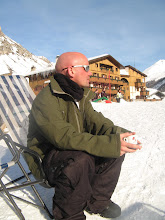Landslides!

Below you will find the information that we used in today's lesson. This will help you write the essay that I set for you.
Physical (natural) causes of landslides
Landslides can be natural events. There are several physical factors that can lead to a landslide. If there is a period of torrential rainfall this will saturate the soil on the slope and could cause the soil to move quickly downhill. Landslides often happen during hurricanes. If the base of the cliff is eroded by the sea then the rock above it will collapse causing a landslide. This is especially true if the cliff is made up off material that is easily eroded. If the rock is a weak sedimentary rock made of different layers (we call these bedding planes) then it is more likely to cause a landslide as the top layer can slide away. Landslides have a number of other physical ‘triggers.’ Earthquakes can cause landslides as they shake the ground. Volcanoes can cause landslides to occur as they add weight and liquid (lava) to the slope.
Landslides can be natural events. There are several physical factors that can lead to a landslide. If there is a period of torrential rainfall this will saturate the soil on the slope and could cause the soil to move quickly downhill. Landslides often happen during hurricanes. If the base of the cliff is eroded by the sea then the rock above it will collapse causing a landslide. This is especially true if the cliff is made up off material that is easily eroded. If the rock is a weak sedimentary rock made of different layers (we call these bedding planes) then it is more likely to cause a landslide as the top layer can slide away. Landslides have a number of other physical ‘triggers.’ Earthquakes can cause landslides as they shake the ground. Volcanoes can cause landslides to occur as they add weight and liquid (lava) to the slope.
Human causes of landslides
Human activity can increase the probability of landslides. Cities are especially vulnerable. In poor countries (LEDCs) people have cut down trees and removed vegetation on slopes so that they can build houses. The roots of this vegetation binds the soil together and protects it from heavy rainfall keeping the slope stable, if vegetation is removed the slope is more at risk of landslides. (We call this deforestation) Placing buildings on slopes increases the weight on a slope and again increases the chance of a landslide. Humans sometimes can undercut (excavation) the bottom of slopes and this increases the instability of the slope and can again cause landslides. Often it is a combination of human and physical processes that cause landslides.
Human activity can increase the probability of landslides. Cities are especially vulnerable. In poor countries (LEDCs) people have cut down trees and removed vegetation on slopes so that they can build houses. The roots of this vegetation binds the soil together and protects it from heavy rainfall keeping the slope stable, if vegetation is removed the slope is more at risk of landslides. (We call this deforestation) Placing buildings on slopes increases the weight on a slope and again increases the chance of a landslide. Humans sometimes can undercut (excavation) the bottom of slopes and this increases the instability of the slope and can again cause landslides. Often it is a combination of human and physical processes that cause landslides.
Background and facts
Recent studies rank landslides as thirteenth among natural hazards in terms of the impact they have on humans. Between 1945 and 1990 there were 33 landslides with death tolls of more than 50. These killer events result from large and rapid movement of material down slopes which then bury people and buildings. Worldwide the average death toll from landslides is thought to be about 600 per year. It is difficult to measure the deaths caused by landslides as they often occur with other hazards. Mountainous areas in the tropics that experience hurricanes, volcanoes, earthquakes or heavy rainfall are especially vulnerable to landslides. Japan experiences a large number of landslides because of its snow melt, typhoons, geology and volcanic eruptions. Landslides can leave people homeless, can disrupt transport and can bury or sweep away people and buildings.
Recent studies rank landslides as thirteenth among natural hazards in terms of the impact they have on humans. Between 1945 and 1990 there were 33 landslides with death tolls of more than 50. These killer events result from large and rapid movement of material down slopes which then bury people and buildings. Worldwide the average death toll from landslides is thought to be about 600 per year. It is difficult to measure the deaths caused by landslides as they often occur with other hazards. Mountainous areas in the tropics that experience hurricanes, volcanoes, earthquakes or heavy rainfall are especially vulnerable to landslides. Japan experiences a large number of landslides because of its snow melt, typhoons, geology and volcanic eruptions. Landslides can leave people homeless, can disrupt transport and can bury or sweep away people and buildings.
Photographs of landslides - look here for some visual images of landslides in Italy


<< Home